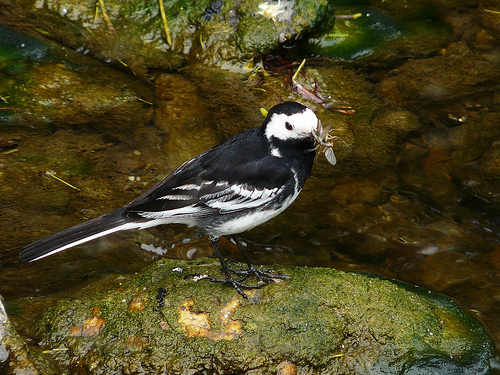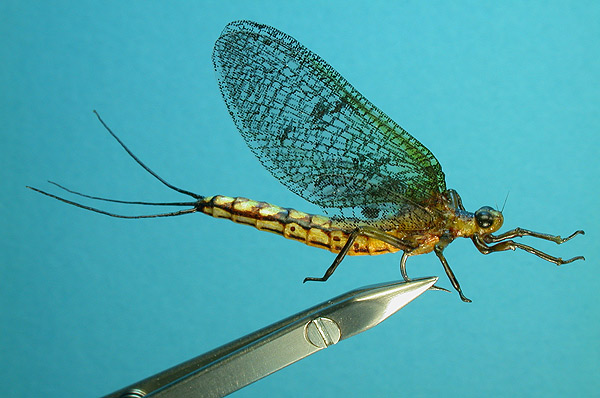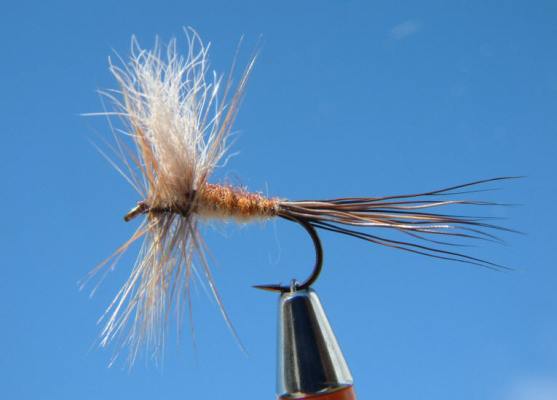
Interactions and Ecological Considerations
The most important ecological consideration of the mayflies
is their value to fish populations. Many kinds of fish eat
large amounts of Mayflies in every stage of their lifecycle.
In particular mayflies are particularly important as a part of
the smaller fishes diet which are in turn a food source for
larger fish. Mayflies are herbivores that eat numerous
forms of plants including algae, rooted aquatic vegetation, and
plant debris.
fish eat
large amounts of Mayflies in every stage of their lifecycle.
In particular mayflies are particularly important as a part of
the smaller fishes diet which are in turn a food source for
larger fish. Mayflies are herbivores that eat numerous
forms of plants including algae, rooted aquatic vegetation, and
plant debris.
This is crucial for food webs because they
bridge the gap between plant production and fish production by
using plants to create an appetizing meal (themselves) for fish.
Between the nymph and subimago stages they are particularly
vulnerable to fish. Examples of particular fish that may
eat mayflyies are
yellow perch,
channel catfish, and
small mouth bass, click on the respective links to learn
more about these organisms.
When mayflies take flight they become a food source for even
more organisms such as birds, bats,
and predatory insects (Leonard, 1962). As if those weren't
enough predators, the mayflies have several more organisms to
worry about once they reach their shelter to make the transition
from subimago to imago. Here they are a food source for
jumping spiders, wolf spiders, predaceous
 beetles, and even
mammals including flying squirrels (Leonard, 1962). It
goes without saying that even though humans do not eat mayflies
directly, they still have a major affect on us as a species.
Without mayflies playing their crucial role in aquatic food
chains many species of fish could die off which would be a huge
problem. Aside from their role in food chains, mayflies
still can have an affect humans just by their
shear numbers. The diversity of organisms that interact with these flies
directly or indirectly is a testament to the mayflies importance
to ecological food chains.
beetles, and even
mammals including flying squirrels (Leonard, 1962). It
goes without saying that even though humans do not eat mayflies
directly, they still have a major affect on us as a species.
Without mayflies playing their crucial role in aquatic food
chains many species of fish could die off which would be a huge
problem. Aside from their role in food chains, mayflies
still can have an affect humans just by their
shear numbers. The diversity of organisms that interact with these flies
directly or indirectly is a testament to the mayflies importance
to ecological food chains.
Affects on Fishing
This is the area where mayflies are
particularly i nteresting to me. My
dad, brother and I
go fishing up in Ontario every summer on Eagle Lake (Andy
Meyer's Lodge). The reason we went there in the first
place is because we kept hearing how awesome the fishing is in
Canada. Our first year on Eagle lake we barley caught
anything and couldn't figure out why the fish weren't biting.
It wasn't until we were there for a couple days until we started
to inquire a
nteresting to me. My
dad, brother and I
go fishing up in Ontario every summer on Eagle Lake (Andy
Meyer's Lodge). The reason we went there in the first
place is because we kept hearing how awesome the fishing is in
Canada. Our first year on Eagle lake we barley caught
anything and couldn't figure out why the fish weren't biting.
It wasn't until we were there for a couple days until we started
to inquire a bout the large masses of dead insects floating on
the surface of the lake. They were mayflies! We had
arrived on the lake days after their hatch and
the fish were eating so many of them that they didn't want anything
to do with our minnows or lures. Every year from then on we
wait to go up until after the mayflies hatch and fishing has been as
advertised ever sense. So I can say first hand that
mayflies are a major food source for fish of all kinds because we
couldn't catch a thing while they were a viable food source.
Where mayflies develop has been mentioned so far, but to get a more in
depth description of their environment, check out the
habitat page.
bout the large masses of dead insects floating on
the surface of the lake. They were mayflies! We had
arrived on the lake days after their hatch and
the fish were eating so many of them that they didn't want anything
to do with our minnows or lures. Every year from then on we
wait to go up until after the mayflies hatch and fishing has been as
advertised ever sense. So I can say first hand that
mayflies are a major food source for fish of all kinds because we
couldn't catch a thing while they were a viable food source.
Where mayflies develop has been mentioned so far, but to get a more in
depth description of their environment, check out the
habitat page.
Back to homepage